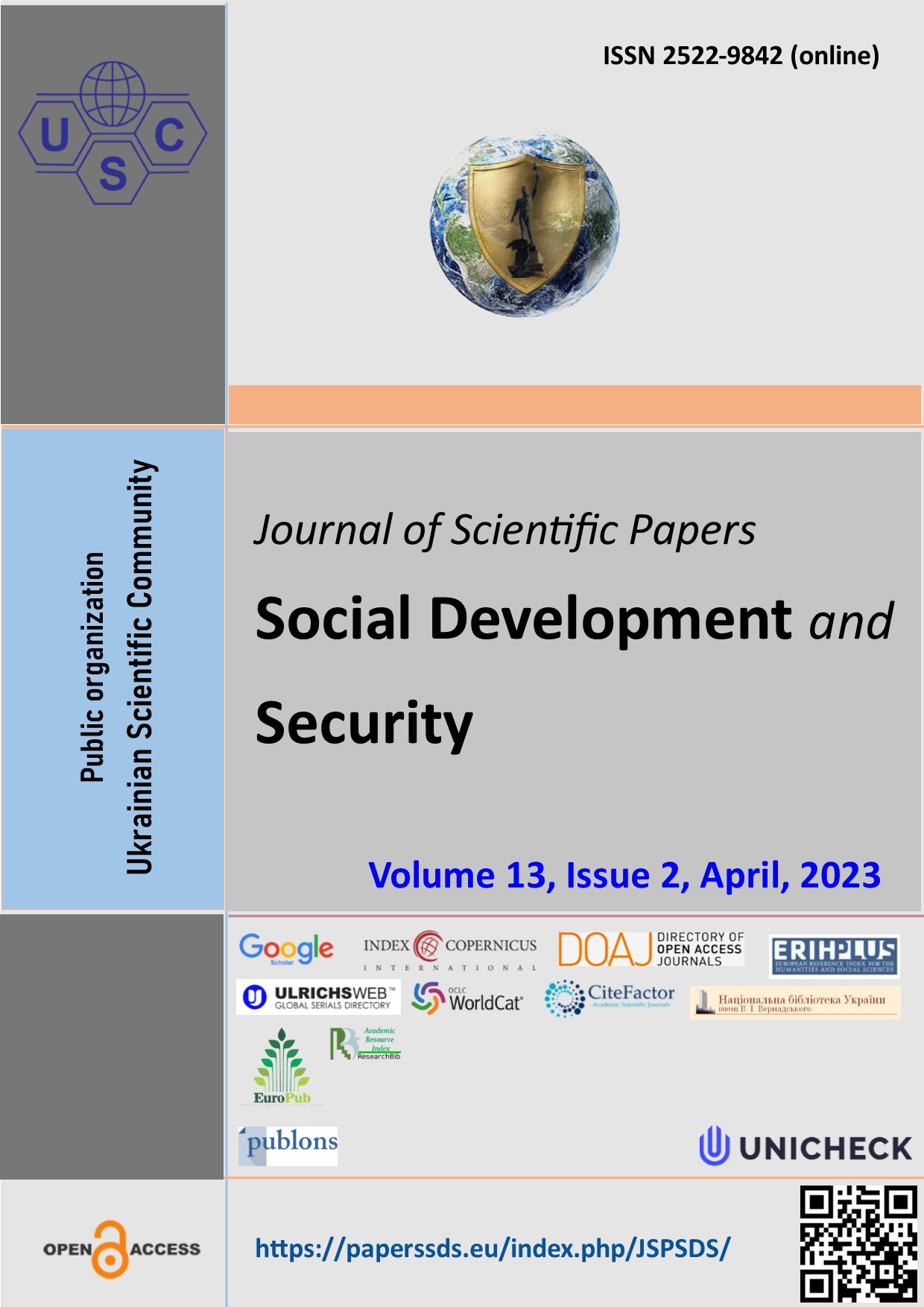Role of Strategic Leadership in the Military Human Resource Management’s Strategy
Abstract
Purpose: The purpose of this paper is to examine what strategic leader’s attributes, such as qualities, capabilities and behaviours matter for development and implementation of the military human resource management’s strategy throughout capabilities-based defence planning process. Exploring the strategy algorithm presented may offer new insight to military leaders into effective applying their characteristics in human resource management activities.
Methods: theoretical, systematic and functional research methods were used during the work.
The results of the study: during the research it was established that strategic leadership play a key role in a human resource management’s strategy development process with the main strategic leader’s qualities, capabilities and behaviours. In this sense, the strategic leaders’ ability to formulate, make, coordinate and implement strategy as a consistent combination of end-state, strategic goals, consistent actions and resources to achieve them (interrelated combination of ends, ways and means) is of high-priority importance for defence institution building.
Practical implications: a review of the available literature found little evidence of the study of a possible algorithm for the development of a personnel management strategy in connection with the specifics of strategic leaders. In this article, each of the defined stages of the strategy is presented along with the corresponding attributes and gives readers an opportunity to think about their practical application.
Papertype: practical.
Downloads
References
Bryman, Alan. Charisma and Leadership in Organizations. London: Sage Publications, 1992. ISBN 978-08-0398-318-2.
Gill, Roger. Theory and Practice of Leadership. London: Sage Publications, 2011. ISBN 978-18-4920-023-3.
Adair, John. Strategic Leadership. London: Kogan Page, 2010. ISBN 978-07-4946-204-8.
Adair, John. Effective Strategic Leadership. London: Macmillan UK, 2002. ISBN 978-03-3390-644-6.
Beatty, Kate. “The Three Strengths of a True Strategic Leader.” Forbes, October, 2010.
Mark Grandstaff, Georgia Sorenson. Strategic Leadership. The Generalʼs Art. Vienna, 2009. ISBN 978-15-6726-236-6.
Hitt, Michael A. and Haynes, Katalin Takacs and Serpa, Roy, Strategic Leadership for the 21st Century (2010). Business Horizons (2010) 53, 437-444, Mays Business School Research Paper No. 2012-23, Available from : https://ssrn.com/abstract=1995786.
Studies, staff and members of the 2016/17 course Royal College of Defence. Getting Strategy Right (Enough). London: Defence Academy of the United Kingdom, 2017: 61-73.
Magee, Roderick R. Strategic Leadership Primer. Carlisle: U.S. Army War College, 1998: 3-4.
An Interview with David H. Petraeus, General (USA Retired), On Strategic Leadership (08 February 2016). Available from : http://belfercenter.ksg.harvard.edu/PetraeusStrategicLeadership (accessed January 18, 2022).
“The order of organization and implementation of defence planning in the Ministry of Defence of Ukraine, the Armed Forces of Ukraine and other components of the Defence Forces.” Order 484 of the Ministry of Defence of Ukraine. Kyiv, 22 December 2020.
Mazarr, Michael J. The U.S. Department of Defence's Planning Process. Components and Challenges. Research report, RAND Corporation, 2019. Available from : https://www.rand.org/pubs/research_reports/RR2173z2.html (accessed January 15, 2022).
How the Army Runs. A Senior Leader Reference Handbook. Carlisle: U.S. Army War College, 2018. ISBN 979-88-2040-140-4.
Leonard, Henry A. “Human Resources Management.” National Defense University, The Journal of Complex Operations. 20 November 2017. Available from : https://cco.ndu.edu/News/Article/1375863/7-human-resources-management/ (accessed January 18, 2022), 115
“The concept of military personnel policy of the Ministry of Defence of Ukraine for the period up to 2025.” Order 280 of the Ministry of Defence of Ukraine. Kyiv, 14 September 2021.
“On approval of the main directions of development of military personnel policy in the Armed Forces of Ukraine for the period up to 2025.” Order 5 of the Ministry of Defence of Ukraine. Kyiv, 12 January 2021.
UK Ministry of Defence, Development, Concepts and Doctrine Centre, Joint Doctrine Publication 0-01, UK Defence Doctrine (5th Edition) (2014), 7 (cited from “Getting Strategy Right (Enough)”) (RCDS, 2017), 2.
Robbert, Al. High-Performance GovernmentStructure, Leadership, Incentives. Available from : https://www.jstor.org/stable/10.7249/mg256prgs.12 , RAND Corporation, n.d. (accessed January 11, 2022): 258–261.
Abstract views: 510 PDF Downloads: 328
Copyright (c) 2023 Olena Holota, Oleksandr Tytkovskyi

This work is licensed under a Creative Commons Attribution 4.0 International License.
The authors agree with the following conditions:
1. Authors retain copyright and grant the journal right of first publication (Download agreement) with the work simultaneously licensed under a Creative Commons Attribution License that allows others to share the work with an acknowledgment of the work's authorship and initial publication in this journal.
2. Authors have the right to complete individual additional agreements for the non-exclusive spreading of the journal’s published version of the work (for example, to post work in the electronic repository of the institution or to publish it as part of a monograph), with the reference to the first publication of the work in this journal.
3. Journal’s politics allows and encourages the placement on the Internet (for example, in the repositories of institutions, personal websites, SSRN, ResearchGate, MPRA, SSOAR, etc.) manuscript of the work by the authors, before and during the process of viewing it by this journal, because it can lead to a productive research discussion and positively affect the efficiency and dynamics of citing the published work (see The Effect of Open Access).
















